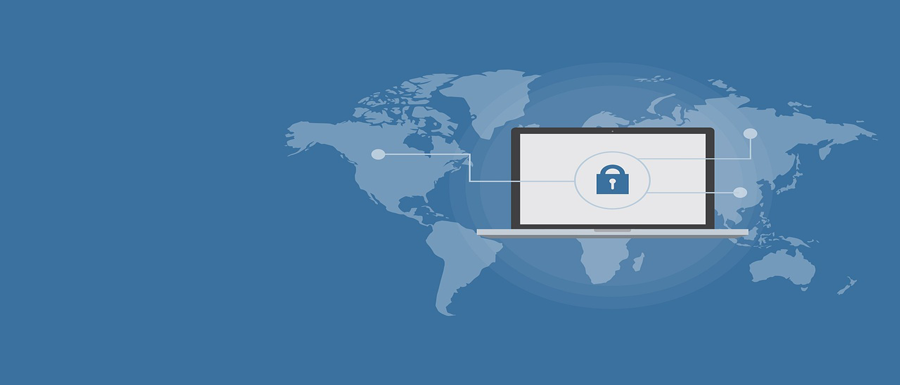As a business owner, your employees' safety and the security of your company are vital. Workplace threats come in many forms; workplace violence, data breaches, or even theft can all affect the well-being and reputation of your business.
A secure workplace is essential for maintaining employee morale, productivity and protects assets from damage or loss. This is where an effective Workplace Security Program comes into play.
In this post, we will discuss The Complete Workplace Security Checklist - a comprehensive guide to ensuring that every aspect of your business's security meets proper standards.
Let us dive in with access control system procedures using password protection tools and risk assessment methods to improve workplace security!
The Importance Of Workplace Security
Workplace security is crucial in protecting confidential information, ensuring employee safety and maintaining equipment and property.
Protecting Confidential Information
It's vital for businesses to prioritize protecting confidential information in their workplace security checklist. Data breaches can cost a company millions of dollars, not to mention the loss of trust from customers and stakeholders.

Implementing password protection tools, access control systems, and firewalls can prevent unauthorized access to sensitive data.
In addition, employee education on cybersecurity best practices is crucial. Regular training sessions on recognizing phishing emails and safeguarding passwords can go a long way in preventing cyber attacks.
Furthermore, having policies in place for responding to potential data breaches or security incidents should be part of any comprehensive security plan.
As an employer, it's your responsibility to keep your employees' personal information safe as well. This includes social security numbers, addresses, and medical records.
Properly storing these types of documents with limited access or even opting for cloud-based document storage solutions that offer secure encryption is essential for maintaining confidentiality within the workplace environment.
Ensuring Employee Safety
Employee safety is a top priority for any business owner, and workplace security plays a critical role in keeping employees safe. This includes measures to prevent workplace violence, such as implementing access control systems and security guards.
It also involves prioritizing physical security by securing entrances and exits, installing surveillance cameras, and ensuring proper lighting throughout the building.
By addressing potential risks through risk assessment processes and developing an effective workplace security program, businesses can create a safer environment for their employees.
In addition to physical safety measures, employers must also consider electronic security measures to protect against data breaches. This includes password protection tools and other advanced encryption methods that help safeguard sensitive information from cyber threats.
With a comprehensive workplace security plan that covers both physical and digital threats, businesses can ensure that their employees feel secure on the job while also minimizing the risk of costly legal liabilities associated with inadequate safeguards in place.
Maintaining Equipment And Property
Maintaining equipment and property is an important aspect of workplace security that must not be overlooked. Physical assets, such as computers, machines, and vehicles, are expensive investments that require proper care to prevent theft or damage.

A workplace security program should include measures for securing equipment and property against loss or damage caused by natural disasters or human actions.
The first step in maintaining equipment and property is to assess the risks associated with each asset. This requires conducting a thorough risk assessment of all physical assets to identify potential vulnerabilities.
Access control systems can also be put in place to limit access only to authorized employees who need access to specific areas or resources.
To further protect equipment and property from threats like unauthorized entry, data breaches, and vandalism, it's important for companies to implement strict password protection tools on all devices used within the workplace.
Employees should also be trained on how to secure their workstations when they're not using them.
By prioritizing maintenance strategies over replacement costs through regular upkeep practices within your organization's workplace security plan ensures everything runs efficiently upholding its value without compromising its integrity.
The Complete Workplace Security Checklist
This section will provide a thorough checklist for workplace security, covering physical and electronic security measures, human resources and personnel procedures, emergency response protocols, and risk assessment.
Physical Security Measures
Physical security measures are crucial to ensure the safety and protection of employees, equipment, and property in the workplace. This includes implementing access control systems, such as key cards or biometric identification, to restrict entry to certain areas.

Other physical security measures may include surveillance cameras, motion detectors, and alarms that can alert authorities in case of a break-in or emergency.
It is also important to secure sensitive data by using password protection tools and locking up documents when they are not being used.
Regularly performing a physical security audit checklist can help identify vulnerabilities and gaps in current security measures so that any necessary improvements can be made promptly.
By prioritizing workplace safety through effective physical security measures, business owners can reassure their employees while protecting valuable assets from intruders or other threats.
Electronic Security Measures
Electronic security measures play a significant role in safeguarding confidential information and preventing data breaches. This aspect of workplace security involves the use of various password protection tools, access control systems, and other technical solutions to secure digital assets.
Access control is a critical component of electronic security that restricts unauthorized entry into sensitive areas or equipment.
While implementing electronic security measures may seem complicated, it's essential for any business owner striving to maintain workplace safety.
It aids in cutting down risks associated with unauthorized access to sensitive company information, especially if employees work remotely or outside office hours. In addition, it instills confidence in customers by assuring them that their private data stays safe from external threats such as hacking and cybercrime.
Human Resource And Personnel Measures
Human Resource and Personnel Measures are essential parts of any workplace security program. It is crucial to hire the right people who can be trusted with sensitive data, equipment, and property. Background checks on potential employees should be conducted before making any job offers.
In addition, it is important to have strict access control measures in place that allow only authorized personnel to access certain areas of the workplace. Password protection tools should be implemented for digital files and systems as well.
Furthermore, regular training on workplace safety procedures should be provided by companies to their employees. This will enable them to identify potential hazards and take necessary steps towards mitigating them quickly.
These measures help prevent accidents at work and instill confidence in workers which contributes positively to productivity levels within your business.
Emergency Response Procedures
In case of emergencies, having a solid emergency response plan in place is critical for ensuring workplace safety.
This includes identifying potential hazards and creating procedures to minimize the impact of accidents, evacuations, and other crises. Emergency response plans should be tailored to different situations such as natural disasters, fires, or active assailants.
Having an evacuation plan that all employees are aware of is crucial. Your workplace security program should include designated staff members who can lead workers out of harm's way during an emergency situation quickly.
Also, ensure that there are clear communication channels in place for notifying all employees about any potential dangers so everyone can take appropriate action. Training employees on how to identify risks and respond accordingly is key to effective crisis management in the workplace.
Risk Assessment
One of the critical steps in ensuring workplace security is through conducting a risk assessment. This process involves identifying potential hazards and evaluating their likelihood of occurrence and severity of impact on the business, employees, and assets.
By doing so, business owners can prioritize workplace security measures that can prevent risks from happening or minimize their effects if they do occur.
In conducting a risk assessment for your workplace, it's essential to consider both physical and electronic threats to your organization.
These may include data breaches, thefts, vandalism, natural disasters, or even workplace violence. The risk assessment establishes a baseline to measure progress towards achieving an acceptable level of security while also providing insights into how preventive measures affect overall safety levels in the company.
Steps To Implementing Workplace Security
To effectively implement workplace security, employers must develop a comprehensive security plan, provide employee training and education, conduct regular security audits, and partner with professional security companies for additional support.
Developing A Comprehensive Security Plan
Developing a comprehensive security plan is critical in ensuring workplace safety and protection of assets.
This involves a thorough assessment of potential risks, evaluating previous incidents, and identifying vulnerabilities that need attention. It's important to involve key stakeholders such as employees to ensure the security plan considers their input.
A comprehensive security plan should include threat detection measures such as alarm systems, access control systems with password protection tools or biometric identification verification, security personnel presence for monitoring activities, and emergency response procedures.
Regular training and education of employees on how best to handle threats improve preparedness levels.
By implementing a comprehensive workplace security plan businesses can mitigate risks and liabilities while enhancing reputation and trust among stakeholders.
Additionally adopting physical, electronic human resources measures create a safer environment which help increase employee morale & productivity since they feel secure when working at the company premises.
Employee Training And Education
Employee training and education are critical components of workplace security. Ensuring that employees understand the importance of security measures is key to creating a culture of safety in the workplace.
Training should cover physical security procedures, such as access control and emergency response protocols, as well as electronic security measures like password protection tools.
Regularly conducting employee training sessions can also help identify potential vulnerabilities in current systems and processes. When team members know how to identify suspicious activity or behavior, they become more effective advocates for workplace security overall.
Additionally, providing employees with ongoing support when it comes to cybersecurity best practices promotes proactive and collaborative approaches toward safeguarding sensitive data.
Regular Security Audits
Regular security audits are an important aspect of workplace security. These audits help to ensure that safety and security measures are in place and up-to-date. It is recommended that companies conduct regular audits, perhaps annually or bi-annually depending on the size and complexity of their operations.

A key benefit of regular security audits is the ability to identify potential risks before they become a problem.
This includes identifying areas where sensitive data may be at risk or physical vulnerabilities in buildings or infrastructure. By proactively addressing these issues, businesses can reduce the likelihood of costly incidents down the line.
Partnering With A Professional Security Company
Partnering with a professional security company can be a wise decision for business owners who want to enhance the security of their workplace.
These companies are equipped with the expertise, skills, and resources needed to provide comprehensive protection for businesses of all sizes. By partnering with them, you can have peace of mind knowing that your workplace is secure against unauthorized entry, thefts, data breaches and other threats.
Professional security companies offer a range of solutions tailored to meet specific needs in various industries. They will assess potential vulnerabilities in your workplace and create customized plans that address any identified risks effectively.
They may also provide employee education on cybersecurity measures such as password protection tools or access control systems to prevent human error from creating new risks.
With regular checks by trained professionals using physical security audit checklists xls businesses benefit significantly by having an effective risk management plan in place at minimum cost.
Benefits Of Workplace Security
Implementing a strong workplace security program not only protects employees and assets, but also mitigates risks and liabilities, increases productivity and morale, and enhances reputation and trust.
Discover how you can improve your workplace security by reading on.
Protects Employees And Assets
One of the most important benefits of implementing a comprehensive workplace security program is that it protects both your employees and your assets. By ensuring that the workplace is secure, you help to create a safe working environment for your staff members.
This can lead to improved employee morale and increased productivity as they feel confident in their safety while on the job.
In addition to protecting your employees, an effective security plan also helps safeguard your company's valuable assets. Workplace theft, vandalism, and other forms of property damage can have significant financial consequences for businesses.
However, with the right measures in place - such as access control systems and surveillance cameras - you can deter would-be criminals from targeting your business and protect against potential losses.
Investing in workplace security not only mitigates risks but also gives peace of mind to management knowing that their employees are safe at work and all properties are protected from unauthorized individuals who might cause harm or be involved in illegal activities within the premises.
Mitigates Risks And Liabilities
One of the key benefits of implementing a comprehensive workplace security program is that it helps businesses mitigate risks and liabilities.
By identifying potential hazards and vulnerabilities, companies can take proactive steps to address them before they turn into serious problems. This not only protects employees from harm, but it also reduces the likelihood of costly legal battles or fines for non-compliance with safety regulations.
Moreover, having a strong workplace security plan in place can also help protect sensitive information and intellectual property from cyber attacks and data breaches.
With password protection tools, access control systems and regular security audits, organizations can significantly reduce the risk of unauthorized access to critical information.
In short, prioritizing workplace security is crucial if businesses want to minimize risks and liabilities while protecting their employees and assets.
By creating a well-designed security plan based on industry best practices and regularly analyzing its effectiveness, companies can create a safe work environment that inspires trust among both their staff members and clients alike.
Increases Productivity And Morale
Investing in workplace security measures not only protects employees and assets but also increases productivity and morale. When employees feel secure, they are more likely to focus on their work rather than worrying about their safety.
This results in higher productivity, greater job satisfaction and improved employee retention rates. In addition, a comprehensive security plan can boost morale by demonstrating that employers prioritize the well-being of their workforce.
Furthermore, implementing workplace security measures also helps create a sense of trust between employers and employees.
By prioritizing employee safety and providing necessary resources such as access control systems or password protection tools for sensitive data, businesses can foster an environment of mutual respect and loyalty.
A positive work culture is essential for high-performance teams, which translates into better business performance overall.
In summary, prioritizing workplace security not only mitigates risks and liabilities but also has several benefits such as increased productivity, better employee morale, enhanced reputation and trust among customers/clients.
Employers who invest in these measures show that they value the people who help run their business every day -and make it safer- creating loyal workers who are committed to contributing to its success over time.
Enhances Reputation And Trust
Implementing a comprehensive workplace security program not only protects employees and assets but also enhances the company's reputation and trust. Clients, customers, and suppliers are more confident working with businesses that prioritize workplace safety.
A positive reputation and trustworthiness can improve brand image, attract top talent, increase sales, and strengthen relationships.
Establishing a high level of security measures sends a message that the business takes its employee's safety seriously. This demonstrates to workers that their well-being is essential to the organization's success.
A safe work environment free from harm raises morale levels among workers resulting in increased productivity rates. Trust between employer-employee is vital for any successful business operation; when workers feel secure in their jobs physically, financially they produce better results.
In conclusion, enhancing reputation and trust should be one of the primary reasons why employers must prioritize workplace security measures daily.
An effective security program consisting of multiple layers will reduce risks from various sources such as thefts or data breaches while ensuring employee welfare regularly monitored through checklists like an audit or inspection checklist makes sure these programs are followed regularly without fail.
Thus building strong foundations of a safer workspace reinforces reliability towards stakeholders leading to long term growth opportunities for companies of all sizes alike!
Conclusion
In today's world, workplace security is more critical than ever. Not only does it protect confidential information and ensure employee safety, but it also helps maintain equipment and property.
By using the complete workplace security checklist, businesses can implement effective physical and electronic measures to safeguard their premises against potential threats.
In addition to creating a comprehensive security plan, training employees on emergency response procedures and conducting regular audits are essential steps towards prioritizing workplace security.
When employers invest in improving their company's safety practices from data breaches to physical access control systems, they benefit from increased productivity, mitigated risks, enhanced reputation & most importantly trust among employees.
So don't wait any longer - start incorporating these best practices into your business today!
FAQs:
1. What is a workplace security checklist and why is it important?
A workplace security checklist outlines the necessary measures to ensure the safety of employees, visitors and assets in a given work environment.
It’s an essential tool for organizations looking to protect themselves against physical threats, cybersecurity risks and legal liabilities.
2. What are some of the key components of a workplace security checklist?
Some common elements found on a workplace security checklist include access control systems, surveillance cameras, alarm monitoring systems, employee background checks, data encryption protocols, disaster recovery plans and incident response procedures.
3. How can I create a custom security checklist for my organization?
To create your own customized security checklist you should start by conducting an assessment of your facility's physical layout as well as any digital systems that may be vulnerable to cyber attacks.
You should also consult with local law enforcement agencies or hire a professional consultant who specializes in this area to help identify potential areas of concern.
4. How often should I review and update my organization's workplace security policies?
It’s recommended that businesses conduct regular reviews (at least annually) of their existing policies and procedures surrounding workplace safety & cyber-security with stakeholders potentially including HR staff members, IT experts, Security personnel - this will help identify new trends in threat vectors or weaknesses within current infrastructure which could lead towards better preventive measures being taken over time if needed.
This way businesses can stay ahead of emerging risks while keeping everyone safe both physically onsite but also online when utilizing company resources.

